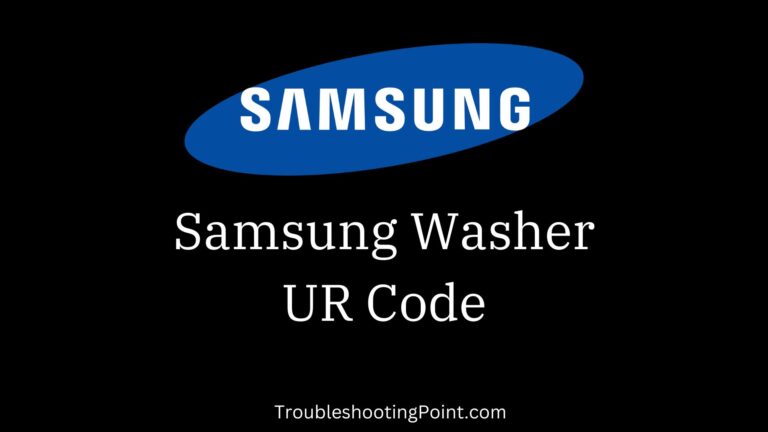Is your Whirlpool Cabrio washer stuck on sensing, leaving you puzzled and your laundry undone? This common issue can be quite frustrating for any homeowner. It’s a scenario where your washer, known for its efficiency and reliability, suddenly halts before the main wash cycle, failing to progress beyond the initial sensing stage.
In this guide, I will help you understand the reasons behind this problem and help you with practical solutions to get your Whirlpool Cabrio washer back in action.
So, let’s get into the article right away:
Whirlpool Cabrio Washer Sensing Phase Explained
The sensing phase is highly crucial for the Whirlpool Cabrio washer as it helps determine the load size and balance. This automatic process, involving slight agitation of the clothes, allows the washer to adjust water usage and cycle duration for optimal efficiency.
However, when your washer gets stuck in this stage, it halts the whole cycle, preventing water fill and progression to the main wash. Understanding this phase is vital for diagnosing and resolving issues that keep the washer stuck on sensing.
What Causes the Sensing Issue?
Experiencing a Whirlpool Cabrio washer stuck on sensing can be a real puzzle. Several factors might be at play, disrupting this crucial phase.
Common causes range from a clogged water inlet valve, a malfunctioning shift actuator, to issues with the drive motor or control board. Sensor calibration errors also play a role.
Identifying these usual suspects is key in troubleshooting and fixing your washer, ensuring it moves smoothly from sensing to washing.
Diagnosing Whirlpool Cabrio Washer Is Stuck on Sensing Error
When your Whirlpool Cabrio washer gets stuck on sensing, pinpointing the exact cause can be challenging but is crucial for an effective fix. Here’s a step-by-step approach to diagnose the issue:
- Enter Diagnostic Mode: Start by putting your washer into Diagnostic mode. This is typically done by a specific combination of control panel actions – often involving turning the dial in a certain pattern or pressing a combination of buttons. Refer to your washer’s manual for the exact method for your model. Diagnostic mode triggers the washer to run a self-test sequence, displaying error codes that highlight where the problem might be.
- Interpreting Error Codes: Once in Diagnostic mode, observe the error codes displayed. These Whirlpool Cabrio Washer error codes are the washer’s way of communicating specific issues. For example, a code like “F7E1” indicates a motor speed sensing fault, while “LF” (Long Fill) might suggest an issue with the water supply. Understanding these codes is critical; they guide you on which washer component might be failing.
- Manual Checks: In addition to relying on error codes, perform some manual checks. Inspect the water inlet valve for clogs or damage, ensure the drive motor isn’t overheating or making unusual noises, and check if the shift actuator is functioning correctly. Sometimes the issue might be as simple as a loose connection or a clogged hose.
- Consult the Tech Sheet: Your washer should have a tech sheet, usually located inside the control panel or service area. This sheet provides detailed information on error codes, diagnostic procedures, and troubleshooting tips specific to your model. It’s an invaluable resource for deep troubleshooting.
How To Fix Whirlpool Cabrio Washer Is Stuck on Sensing Error?
1. Resetting the Washer
Resetting your Whirlpool Cabrio washer can often resolve minor glitches, including issues where it gets stuck on the sensing phase. Here’s how to do it:
- Power Off: Start by turning off your washer. This can usually be done by pressing the power button. If your model doesn’t have a power button, simply skip to the next step.
- Unplug the Machine: Disconnect your washer from the power source. This means physically unplugging it from the wall outlet. Ensure you do this safely to avoid any electrical hazards.
- Wait for Reset: Leave the washer unplugged for about 1 to 2 minutes. This waiting period allows the washer’s electrical charge to dissipate, effectively clearing its memory and resetting the system.
- Reconnect Power: After the waiting period, plug your washer back into the electrical outlet.
- Power On and Test: Turn your washer on and try running a washing cycle to check if the issue of being stuck on sensing is resolved.
2. Addressing Water Inlet Valve Issues
If your Whirlpool Cabrio washer is stuck on sensing, one potential culprit could be the water inlet valve. Here’s how you can address issues with this component:
- Locate the Water Inlet Valve: The water inlet valve is typically found at the back of your washer where the water hoses connect. You may need to move the washer away from the wall and disconnect the hoses for better access.
- Inspect for Blockages: Check the screens inside the valve for any debris or sediment that might be blocking water flow. Gently clean the screens if needed, but be careful not to damage them.
- Check for Leaks or Damage: Look for any signs of leaks, cracks, or wear on the valve. A damaged valve may not function properly and could be the reason why your washer is stuck on sensing.
- Test Water Flow: Reconnect the hoses (if you disconnected them) and turn on the water supply to test the flow through the valve. If water seems to trickle in or not flow at all, there might be an issue with the valve.
- Electrical Testing: Using a multimeter, test the solenoid on the valve for continuity. A lack of continuity indicates a faulty valve that needs replacement.
- Replace if Necessary: If the inlet valve is found to be faulty, it will need to be replaced. This involves removing the old valve and installing a new one, ensuring all connections are secure and watertight.
- Reassemble and Test: After replacing the valve, reassemble any parts you had to disassemble, reconnect your washer to the power supply, and run a test cycle to see if the issue is resolved.
Safety Tip: Always ensure your washer is unplugged and the water supply is turned off before attempting any repairs to avoid electrical hazards and water leaks.
Note: If you’re uncomfortable performing these steps or if the problem persists after addressing the valve, it may be best to consult a professional appliance repair technician.
3. Replacing the Shift Actuator
The shift actuator in your Whirlpool Cabrio washer is crucial for transitioning from sensing to washing mode. If faulty, it might cause the washer to get stuck on sensing. Here’s how to replace it:
- Safety First: Before beginning, unplug the washer to ensure safety. This is important to avoid any electrical hazards.
- Access the Shift Actuator: Pull the washer away from the wall. You’ll find the shift actuator typically located at the bottom of the washer, accessible from underneath. You might need to tilt the washer back or lay it on its side (place a towel or a blanket underneath to prevent damage).
- Remove the Old Actuator: The actuator is usually mounted with screws and connected with a wire harness. Remove the screws holding it in place, and carefully disconnect the wire harness.
- Install the New Actuator: Position the new actuator in place and secure it with the screws you removed earlier. Reconnect the wire harness to the new actuator. Make sure the connections are secure and the actuator is firmly in place.
- Testing: Once installed, upright your washer (if it was tilted or laid down), plug it back in, and run a test cycle to ensure the new actuator functions correctly and that the washer moves past the sensing stage.
- Additional Calibration: Some models may require a recalibration after replacing parts. Refer to your washer’s manual or contact customer support for specific recalibration steps for your model.
- Seek Professional Help if Needed: If you’re unsure about replacing the actuator yourself or if the problem persists even after replacement, it’s advisable to contact a professional technician.
Note: The exact location and replacement procedure for the shift actuator can vary slightly depending on the specific model of your Whirlpool Cabrio washer. Always refer to your washer’s manual for model-specific instructions.
Also Read: Fix Whirlpool Washer Leaking From Bottom
4. Dealing with Control Board Problems
When your Whirlpool Cabrio washer is stuck on sensing, a malfunctioning control board could be the cause. Here’s how to address potential control board issues:
- Identify Symptoms: A faulty control board may manifest through various washer malfunctions, such as irregular cycles, unresponsive controls, or the washer getting stuck on certain modes like sensing.
- Safety Precautions: First, ensure your safety by unplugging the washer from the power source. This prevents any risk of electric shock.
- Access the Control Board: The control board is typically located behind the washer’s control panel. You’ll need to remove the panel to access the board. This might involve unscrewing and carefully detaching the panel.
- Visual Inspection: Look for obvious signs of damage on the control board, such as burnt areas, melted components, or a distinct burnt smell. These are clear indicators that the control board is damaged.
- Check Connections: Sometimes, issues arise from loose or corroded connections rather than the board itself. Check all connections to the control board, ensuring they are secure and free from corrosion.
- Testing: If equipped and comfortable with using a multimeter, you can test some components of the control board for continuity. However, this requires technical knowledge and understanding of electronic circuits.
- Replacement Decision: If you determine the control board is faulty, consider replacing it. Given the complexity and cost, weigh the option of replacement against the age and overall condition of your washer.
- Professional Assistance: Due to the complexity of electronic components, it’s often advisable to seek professional help for diagnosing and replacing a control board. An experienced technician can confirm the issue and properly replace the board if necessary.
- Reassembly and Testing: If you’ve replaced the board, reassemble the control panel and reconnect the washer. Run a test cycle to check if the issue is resolved.
Note: Handling electronic components like a control board requires care and precision. If you’re not confident in your technical skills, professional assistance is recommended to avoid further damage to your washer or potential safety hazards.
Conclusion
Addressing the issue of a Whirlpool Cabrio washer stuck on sensing can be a straightforward process when you know what to look for. From resetting the washer to dealing with intricate control board problems, this guide provides the necessary steps for troubleshooting. Remember, regular maintenance and timely repairs can extend the life of your washer and ensure seamless operation. If you encounter persistent issues or feel unsure about tackling them, don’t hesitate to seek professional help to restore your washer’s functionality.
Read More:

![Maytag Top Load Washer Stuck on Sensing [Fixed]](https://troubleshootingpoint.com/wp-content/uploads/2024/01/maytag-top-load-washer-stuck-on-sensing-768x432.jpg)




